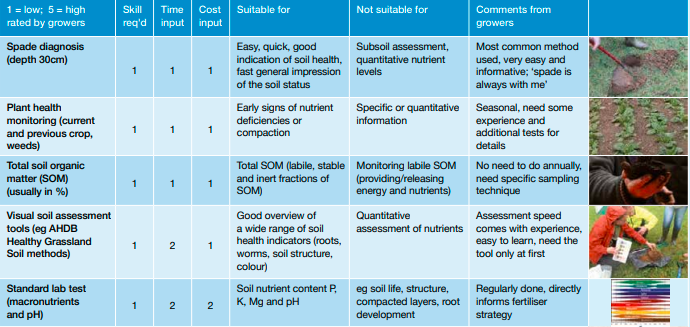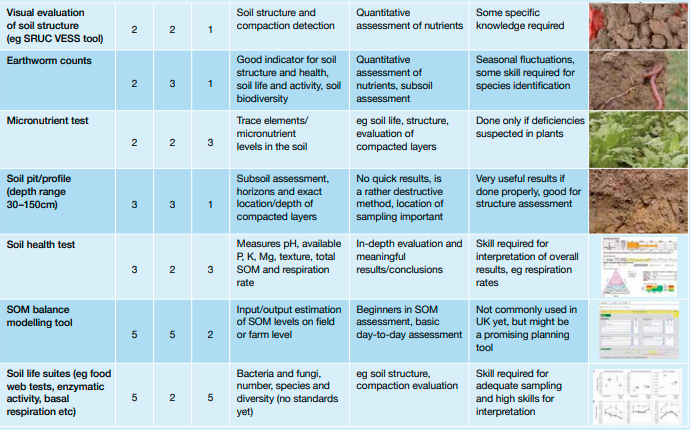AHDB
Soil Health
Farmers and growers are concerned about the current health of their soils. Most farmers and growers understand the importance of soil health for the productivity, sustainability and profitability of their business, but many face significant challenges when interpreting results from the laboratory analysis or when choosing suitable methods for assessing the health of their soils beyond the standard pH, phosphorus (P), potassium (K), magnesium (Mg) analysis.
To be of value to farmers and growers, methods for soil assessment should not only measure soil health, but should also provide information that can be used to inform decision making in relation to soil management. This AHDB information sheet provides an overview of the various methods currently available.
Indicators of Soil Health
The functioning of soil depends upon a complex interaction between organisms large and small, chemical reactions in solution and on the surface of clay particles, within a structure determined by natural processes and modified by soil management. A broad range of appropriate indicators of soil health are therefore needed to evaluate the effects and sustainability of agricultural practices. The most commonly agreed and used indicators can be grouped in the three categories of (1) biological, (2) chemical and (3) physical parameters.

Assessment methods
During a series of grower consultations in autumn 2015, regional grower groups in Great Britain discussed different approaches to soil assessment, what methods they found useful and reasons why other are not very commonly used. They were asked to rate a list of categorised soil assessment methods, and the results can be seen here.
Soil assessment tests evaluated and rated by growers

